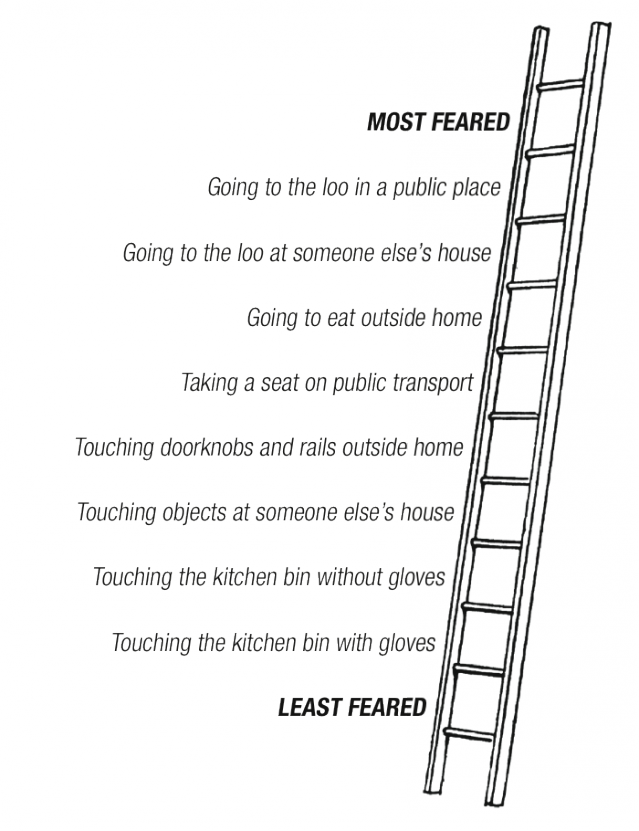OCD
Fighting Obsessions and Compulsions
Simple CBT techniques for defeating obsessive-compulsive disorder
Updated June 23, 2024

Antidepressant drugs are often prescribed for the treatment of obsessive-compulsive disorder, but obsessions and compulsions may also respond to cognitive-behavioral techniques, or to a combination of both antidepressant drugs and cognitive-behavioral techniques.
The most effective cognitive-behavioural technique for compulsions is to delay responding to your urges and then to distract yourself from the resulting tension and anxiety. Try to ignore your urges for longer and longer periods so as to that gradually get densensitized to the discomfort that this arouses. In so doing, you are basically short-circuiting the vicious circle that is at the heart of obsessive-compulsive thinking.

The diagram above represents the vicious circle that takes hold in obsessive-compulsive disorder and that you must be familiar with. Negative thoughts such as anger and guilt merely reinforce the original obsessional thoughts, feeding into the vicious circle. As explained above, you can break the vicious circle by ignoring your compulsive urges for longer and longer periods so that you gradually get desensitized to the discomfort that they arouse.
Feeling tired or stressed (for example, because of a difficult relationship or a tight deadline) can aggravate your obsessive-compulsive symptoms, and ignoring your urges is going to be more challenging in these circumstances. So although you can expect to make progress, you are likely to have both good days and bad days. Do not feel discouraged by the bad days; try instead to identify the stressor and then to avoid, address, or minimize it.
Sometimes it can be helpful to devise an ‘anxiety ladder’, which involves ranking anxiety-provoking situations from ‘least feared’ to ‘most feared’: see below, an example of an anxiety ladder for a person with an obsessional fear of germs and frequent and repetitive hand-washing.

Begin by exposing yourself to the first rung of your anxiety ladder and delay responding to your urges. Once you feel relatively comfortable with the first rung, move up to the next rung, and so on. Monitor your anxiety level as you delay responding to your urges, for example, by rating it on a scale of 0 to 10. After some time, your anxiety level should naturally begin to fall off. Sometimes it may seem impossible to prevent all your urges: if this is the case, try to gradually reduce the time that you spend carrying them out. For example, if your urge is to check the stove ten times, try to check it only five times.
In some cases, an obsessional thought or image may lead to a compulsion to have another thought or image so as to ‘neutralize’ it. A useful strategy for dealing with this is to stop fighting the original obsessional thought and simply to accept it, however unnatural or difficult this may seem. Everyone has thoughts that can be unnatural, immoral, or violent; they are just thoughts, they do not make you a bad person. If you try to not think about them, they only become more present in your mind. To illustrate this point, try this now: try not to think about a pink elephant: paradoxically, the only way not to think about a pink elephant is to actually think about one!
Finally, remember to feel positive above your achievements, however modest they may seem. Some people who resist their urges fall prey to negative thoughts. For example, they may feel guilty for putting their loved ones at risk by not checking the stove enough times. Such negative thoughts need to be identified and countered with ‘reality testing’. An example of reality testing is to think to yourself, ‘Most people do not check the stove 12 times’.
I hope you find this advice helpful, but if you are still struggling, then do get enrolled on a formal cognitive-behavioral therapy (CBT) program or some other form of therapy.
Neel Burton is author of Growing from Depression.


